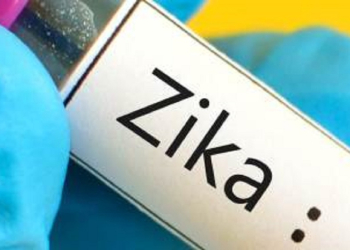New York: Here is some welcome news for the developing countries, which don’t have cold storage facilities (minus 70-degree C) to store vaccines such as Pfizers.
“Studies are apace on now Phase 3 clinical trials for two novel Covid-19 vaccine platforms,” said CBS news in a special dispatch.
The studies have been published in the ‘New England Journal of Medicine’ showing promise of results for two novel Covid-19 vaccine platforms — a plant-based coronavirus-like particle vaccine, and a receptor-binding domain (RBD)-dimer-based vaccine.
The most significant feature of the new vaccines is that neither of them require extreme cold chain storage, which makes them appealing candidates for low and middle-income countries, a key component of global Covid-19 vaccination efforts.
Vaccines Perform Well Despite Variants
The first vaccine is a plant-based particle vaccine developed by Medicago/GSK, which was tested on participants in Argentina, Brazil, Canada, Mexico, the United Kingdom, and the United States as early as March 15 to September 2, 2021, CBS said.
The vaccine, CoVLP, was administered to candidates in two doses within a frequency of 21 days and the results were compared to placebo. The study continued until at least 160 Covid-19 cases were detected in participants at least seven days following the second dose of vaccine.
A total of 24,141 volunteers participated in the trial. Vaccine efficacy was claimed to be 69.5 per cent (95 per cent confidence interval [CI], 56.7 per cent to 78.8 per cent) against any symptomatic Covid-19 caused by five variants that were identified by sequencing, the study found.
The results were even stronger for efficacy against moderate-to-severe disease, at 78.8 per cent (95 per cent CI, 55.8 per cent to 90.8 per cent).
No severe cases or deaths were recorded in the vaccine group. The vaccine group had more adverse effects, but none were severe, the study reported.
“CoVLP+AS03, like all currently deployed vaccines, was designed to target the original viral strain, but no case caused by this strain was identified,” the study said, adding, “The context in which vaccines are currently being tested has clearly changed since early in the pandemic.”
The performance of CoVLP is similar to the current vaccines in use against the current strains. Meaning they are effective against the Alpha, Delta and Kappa variants.
The second vaccine, ZF2001, was tested at 31 clinical sites in Uzbekistan, Indonesia, Pakistan, and Ecuador, and later in China. The vaccine made by Anhui Zhifei Longcom of China was given to participants in a randomised manner of three doses within 30 days of each one.
Only 158 of 12,625 participants in the ZF2001 group contracted Covid-19 during the trial, compared to 580 of 12,568 participants in the placebo group. Vaccine efficacy against infection was 75.7 per cent (95 per cent CI, 71 per cent to 79.8 per cent) and 87.6 per cent (95 per cent CI, 70.6 per cent to 95.7 per cent) against severe to critical disease.
Two participants in the vaccine group, and 12 in the placebo group, died of Covid-19, resulting in 86.5 per cent (95 per cent CI, 38.9 per cent to 98.5 per cent) efficacy rate against death, said the study.
A Genotype sampling from Covid-19 cases in the study showed that Delta, Alpha and B.1.617.3 variants were the primary ones. The vaccine efficacy was 76.1 per cent (95 per cent CI, 70 per cent to 81.2 per cent) against Delta, 88.3 per cent (95 per cent CI, 66.8 per cent to 97 per cent) against Alpha, and 75.2 per cent (95 per cent CI, 55.3 per cent to 87 per cent) against Kappa.
“The high cross-protection conferred by ZF2001 (an antigen based on the Wuhan-Hu-1 sequence) against different SARS-CoV-2 variants is encouraging,” the study said.
Multiple Vaccine Platforms Need of the Hour
Interestingly, neither trial assessed how well the vaccines performed against asymptomatic infections, because both had very few participants over the age of 60. But in an editorial in the New England Journal of Medicine, Hanna Nohynek, MD, PhD, and Annelies Wilder-Smith, MD, PhD, claim that the results in the trials are encouraging.
At present, 31 Covid-19 vaccines are in wide use since conditional approval by national regulatory authorities or under the World Health Organization Emergency Use Listing, and, take a breath, more than 300 are currently in development.
The most popular Covid-19 vaccines used in India are Covishield, supplied by the Serum Institute of India (Pune) and developed under licence from the Oxford vaccine initiated by AstraZeneca, and Covaxin developed by Bharat Biotech, a home-grown company.
India launched the world’s largest vaccination campaign and close to 400 million have been targeted for inoculation with 18-year olds also being added to the list.
Unlike last year (2020-21) when demand outstripped supply, global vaccine supply is now meeting the growing demand. Yet, the emergence of variants that can evade vaccine protection supports a broad range of Covid-19 vaccine platforms, the study claimed.
Mix-and-match strategies may prove to be useful in future booster campaigns. And vaccines that don’t require specialised cold-chain storage may prove useful in limited-resource settings.
“We should remain agile in fine-tuning the best use of Covid-19 vaccines for the greatest effect on global public health by acknowledging trade-offs,” the authors Hanna and Wilder Smith said in their report in the journal.
“With more vaccine platforms available, we can possibly improve decision making regarding the selection of a vaccine, since different vaccine platforms may be more suitable for certain age groups, certain subpopulations (e.g., those with underlying immune-compromising or other medical conditions), and pregnant women,” they added.
As Covid-19 cases began to accelerate again this spring, federal data surprisingly suggests the rate of breakthrough Covid infections in April was worse in boosted Americans compared to unboosted Americans — though rates of deaths and hospitalisations remained the lowest among the boosted.
This does not mean unnecessarily that the booster shots are somehow increasing the risk. Ongoing studies continue to provide strong evidence of additional protection offered by booster shots against infection, severe disease, and death.
Instead, the shift underscores the growing complexity of measuring vaccine effectiveness at this stage of the pandemic. It comes as officials are weighing key decisions on booster shots and pandemic surveillance, including whether to continue using the “crude case rates” at all.
It also serves to illustrate a tricky reality facing the health authorities amid the latest Covid-19 wave: Even many boosted Americans are vulnerable to catching and spreading the virus, at a time when officials are wary of reimposing pandemic measures like mask requirements, said the CBS report even as more and more Americans have discarded wearing the masks in public places such as shopping malls, theaters etc.
“During the Omicron wave, we saw an increased number of mild infections — at-home type of infections, the inconvenience, having a cold, being off work, not great but not the end of the world. And that’s because these Omicron variants were able to break through antibody protection and cause these mild infections,” John Moore, a professor of microbiology and immunology at the Weill Cornell Medical College, was quoted by the CBS News as saying.
“So, one of the dynamics here is that people feel, after vaccination and boosting, that they’re more protected than they actually are, so they increase their risks. That, I think, is the major driver of these statistics,” he said.
On the CDC’s (Center for Disease Control) dashboard, which is updated monthly, the agency acknowledges several “factors likely affect crude case rates by vaccination and booster dose status, making interpretation of recent trends difficult”.
The CDC had rolled out the page several months ago, amid demands for better federal tracking of breakthrough cases. It has now grown to encompass data from immunisation records and positive Covid-19 tests from 30 health departments across the US.
For the week of April 23, it said the rate of Covid-19 infections among boosted Americans was 119 cases per 100,000 people. That was more than double the rate of infections in those who were vaccinated but unboosted, but a fraction of the levels among unvaccinated Americans.
That could be because there is a “higher prevalence of previous infection” right now among those who are unvaccinated and unboosted, the CDC said. More boosted Americans may now have abandoned “prevention behaviours” like wearing masks, leading to an uptick.
Some boosted Americans might be more likely to seek out a lab test for Covid-19, as opposed to relying on over-the-counter rapid tests that go largely unreported to health authorities.
“Home testing has become, I think, the single biggest concern in developed countries that can interfere with our measurements,” CDC’s Ruth Link-Gelles told a conference hosted by the National Foundation for Infectious Diseases last month.
“Moving beyond this crisis, I do think the future is in random sampling. And that’s an area that we’re looking at closely,” Caitlin Rivers, a top official in the agency’s disease forecasting team, told an event hosted by the National Academies last week.
Meanwhile, federal officials are also preparing for key decisions on future Covid-19 vaccine shots, which might up the odds that additional shots might be able to fend off infections from the latest variants.
In the short term, CDC Director Rochelle Walenski recently told reporters that her agency was in talks with the Food and Drug Administration about extending the option for second boosters to more adults.
(IANS)


















